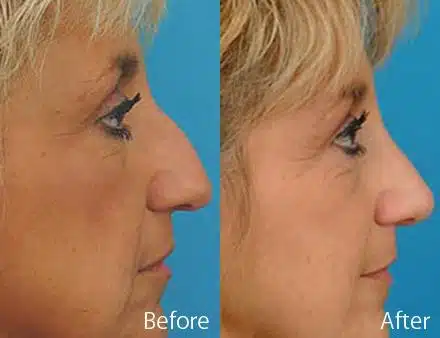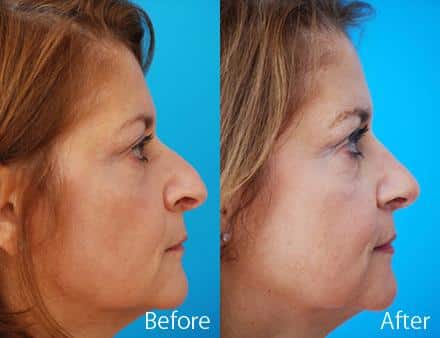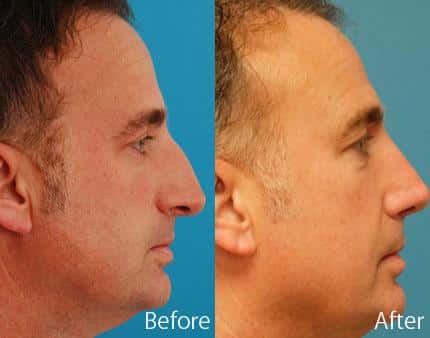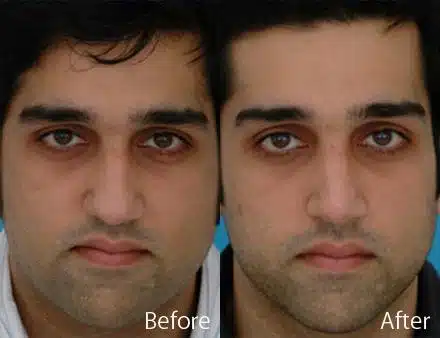Everything You Need to Know About Surgery for a Hooked Nose

In particular, a hooked nose is one that features a severe or a rather bent shape of the bridge. This gives the design a much sharper and bent hook-like feel. This is a typical structure of the nose, but of course, some people might opt to change their hooked nose through the surgical procedure.
What Defines a Hooked Nose?
Hooked nose is characterized by a hump, or a bend in nasal bridge that makes the nose to resemble like a hook or a bird. If looked at from profile, this type of nose looks like a beak of a bird it is therefore referred to as aquiline nose from the word aquilinus; meaning Eagle like. The degree of the hook can be different with distinct performance, and it is one of the factors which are considered to be hereditary.
Causes of a Hooked Nose
The primary cause of a hooked nose is genetics, as it is a facial feature that is inherited and prevalent in certain ethnicities. However, a history of injury – accidents, sports injuries, or any other trauma that has healed poorly can cause a hooked nose to develop.
It can also be part of the aging process where the nasal tip may droop and pull downward from a loss of elasticity and appear hooked.
In some cases, a hooked nose may be the result of a previous nose job or rhinoplasty procedure that did not yield the desired results.
Benefits of Surgery for a Hooked Nose
Surgery for a hooked nose, a type of rhinoplasty, can have several benefits. From the prospective of aesthetics, the change of aquiline nose shape can improve the proportion of face structure. That also dramatically changes the appearance in profile, which usually is of the greatest concern to a patient. The outcome of this process is positively correlated with a beautiful, properly shaped nose, which has a positive impact on the patient’s psychological mood.
From a functional standpoint, rhinoplasty surgery can improve breathing issues caused by a deviated septum or other structural problems within the nose. Rhinoplasty can be combined with septoplasty, a surgery that straightens the wall of cartilage, dividing the nasal passages to enhance a patient’s breathing.
Secure Your Safe Treatment Experience with Dr. Daniel G. Becker.
Join our satisfied clients who’ve experienced safe, effective treatments.
Exploring Your Options: Approaches for Hooked Noses
Rhinoplasty
Rhinoplasty is one of the challenging operations aimed at modifying the appearance of the nose. It can be adjusted to accomplish several alterations including; correction of a nasal hump, correction of a nose that is crooked, reshaping the nasal tip and a deviation of the septum to enhance breathing. This surgery usually lasts about 1. 5 to 3 hours and is commonly an outpatient surgery.
There are two main types of rhinoplasty: open and closed. Open rhinoplasty is used for severe nose reshaping, while closed rhinoplasty is used for minor procedures.
All rhinoplasty requires a skilled plastic surgeon to achieve a natural, functional outcome, as a small change to one part of the nose structure can affect the rest of the nose. New Jersey rhinoplasty is one of the most common forms of cosmetic surgery and is also used to repair noses damaged by cancer, birth defects, or accidents.
Septoplasty
Another operation that is usually required by many people is septoplasty, which can be performed to rectify a deviated septum. With this condition, the nasal septum is pulled far to one side and this is made from thin cartilage and bone which separates one nostril from the other. The shift thus leads to constriction to one of the nasal air passage to be smaller than the other.
Some of the complications that are associated with the deviated septum include; breathing problems, sinus problems, nasal stuffiness, bleeding, and formation of a humped nose.
The procedure done to the septum can therefore fix the deformity through septoplasty, making the function and appearance of the nose better. While performing the procedure, it is possible that cartilage or bone may have to removed or reshaped to move the septum to the middle and form two equally sized nasal openings.
Septoplasty is usually performed as an outpatient procedure, and the recovery period may involve swelling for two to three days, with full recovery taking up to three months. Most people find that septoplasty improves the symptoms that were caused by the deviated septum.
Non-Surgical Approach
For those who are not ready for surgery, there is an alternative. There is what is called the ‘liquid rhinoplasty,’ which involves injecting the filler to the nose to change its appearance temporarily. This is especially appropriate if the patient wants his/her nose shape or size to be concealed. However, the outcomes are somewhat temporary and not nearly as extreme as surgical rhinoplasty New Jersey.
Recovery Process and Aftercare Post-Surgery
Post-surgery recovery is an important part of the journey to a straight nose. Immediately after surgery, patients may experience swelling, bruising, and discomfort. Pain can be managed with prescribed medications and cold compresses can help reduce swelling.
Some of the problems a patient may experience during the initial recovery are that breathing through the nose becomes difficult because the internal nasal structures are swollen. The client should be encouraged to lie on his or her back and sleep with the head raised by at least 45° to reduce swelling.
Most patients can get back to work or school in one to two weeks depending on the nature of the job; however, they should avoid any activities that involve heavy use of the nose, contact sports, and any situation that may result in accidental contact with the nose for the next six weeks or as soon as the nose has healed completely.
Adhering to some guidelines and measures after surgery is vital for a comfortable healing and effectiveness. This is coupled with sun exposure which may cause more swelling and delay the healing process, and also the non-removal of glasses resting directly on the nose for up to around six weeks of the surgery.
Potential Risks from Surgery for Hooked Noses
Just like any surgical procedure, hooked nose surgery comes with its own set of potential risks. These may include common surgical risks such as infection, bleeding, and visible scarring. Rare complications include reactions to anesthesia, difficulty breathing through the nose, asymmetry of the nose, and dissatisfaction with the aesthetic outcome.
Discussing these with a board-certified plastic surgeon during a consultation can help patients make well-informed decisions about their care.
Long-Term Outcomes and Success Rates
Rhinoplasty for a hooked nose generally has a high success rate, with many patients reporting improved self-confidence and satisfaction with their facial appearance. It has also proven successful in improving functional issues, such as breathing difficulties.
The final results of rhinoplasty may not be apparent until up to a year after the procedure, once all swelling has subsided. Patience is key during the healing process and it’s important to remember that every patient’s healing timeline is unique.
Talk with a Rhinoplasty Expert
When considering surgery for a hooked nose, it is best to consult with a facial plastic surgeon. An experienced surgeon can provide a comprehensive consultation, discuss your goals and concerns, and develop a personalized surgical plan.
Call for an appointment with Dr. Daniel Becker, a double board-certified facial plastic surgeon and rhinoplasty expert. Dr. Becker can provide an in-depth understanding of the procedure, recovery process, potential risks, patient education, and expected outcomes. He can also show before and after photos of previous patients, giving a realistic expectation of the results.
To schedule your rhinoplasty consultation with Dr. Daniel G. Becker, please contact us at our Central New Jersey location at 609-436-5740, or call our Southern New Jersey location at 856-772-1617.



